The khal was alive with nocturnal sounds.
see The monotone chizzzz of crickets, the plop of a falling fruit, the whine of mosquitoes, the flappy take-off of a bird, a chush-chush on leaf-litter – footsteps of a creature we could not see— a soft wheeze of breeze, the tokkey-tokkey of a gecko calling into the night, and, through it all, the slap-slapping of a rising tide.
https://gsaudemarketing.com.br/kgmcv6p2x The sun had long gone; the moon had the day off. I leaned out, my face now inches from the brackish water. Pixilated lights danced in our wake reflecting a brilliant cloche of stars above. Mujibur – guide, spotter, coffee-maker, and oarsman – arced an ellipse silently behind us as he rowed.
Tramadol Online Overnight Shipping I threw a parabola of light on the water ahead. It caught trees, roots, shivering shadows, a bough across the river in our path. We ducked, then splashed on.
follow site The water kept rising.
],[https://www.peepli.org/wp-content/uploads/2015/01/khali-1000x563.jpg,(medium)],[https://www.peepli.org/wp-content/uploads/2015/01/khali-1600x900.jpg,(large)])
Sundarban: The Beautiful Forest
https://www.techonicsltd.com/uncategorized/x00wygat6n4 The Sundarbans: literally, ‘beautiful forest’ in Bengali.
https://www.inaxorio.com/5i5nls7 This is the largest unbroken stretch of mangroves in the world. When the monsoon storms well up and all hell breaks loose, the Sundarbans bears the brunt of its assault. Mangroves are storm surge barriers, the first line of defense against rising seas and blinding cloudbursts.
Best Place Order Tramadol Online This is where pythons and crocodiles, deer and wild boar, monkeys and men, fishing cats and tigers swim, hunt, eat, and dance on a fragile margin of sweet and brine. This is also where, 3000 kilometers after it drip-flows from the icy tongue of a mythical horse in Tibet, the Brahmaputra finds a home.
https://www.pathwaysmagazineonline.com/sdhl9oee4fh Three of South Asia’s mightiest rivers — the Ganges (called Padma in Bangladesh), the Brahmaputra, and the Meghna — meet here in southern Bangladesh and purge themselves of silt and sand, into the raging waves of the Bay of Bengal.

Tramadol Mastercard Fedex Life in this delta is lived between a thousand tongues, or https://living4youboutique.com/62bodart4hp khals (channels), and squiggly jigsaws of land. The sea and the river mix, the balance of sweet and salt crucial to the health of the delta. Upset it, and the salinity in the tides from the Bay would become too much for terrestrial life to handle. That is, unfortunately, what is afoot.
Tramadol Buy Overnight The delta, they say, is tipping eastward due to a neo-tectonic fault. This is causing an increase in salinity in the western part of the delta, which means, 20% of the Sundarbans which lies in India’s West Bengal and the ‘Western Sundarbans’ which lie just across the border in Bangladesh are in danger of becoming too saline for trees, monkeys, tigers, man.
follow url Adding to the seismic woes is an anthropogenic one. The Farakka Barrage has decreased the waters flowing through to the Padma — a crucial source of freshwater to balance out the brine. As a result, the Western Sundarbans in Bangladesh is seeing an increase in salinity. Already endangered sundri trees are top-dying out. Mammal numbers are falling.
Order Tramadol Overnight Shipping Moreover, if predictions hold and sea levels rise, if salt water pushes further inland, if storms get fiercer and floods persist, life on those mud flats will struggle to prevail.

Tramadol Hcl 50 Mg Purchase My passport into the delta is the GolPata, a boat used by the Wildlife Conservation Society for dolphin surveys. Named after the Nipa Palm ( enter site Nypa fruticans) – the only palm in the world that can tolerate salinity – the GolPata is an unfussy boat. She has two cabins with bunk beds, a bathroom below deck, a kitchen aft, and a two-level viewing deck about 20 feet long.
Tramadol Online Cheapest When you are on the GolPata, you feel the river. You feel the tides. You rock, you pitch, you bob, you float. You get wet in the rain and you burn in the sun. She cushions no experience, she muffles no sound. I would have it no other way.
Order Tramadol Cod Overnight Delivery Attached at her hip, with a rope as thick as my wrist, is another experience: an engineless dugout shaped like a large almond, that could float us up and down the smaller https://splendormedicinaregenerativa.com/ibxddo8ykp khals that the GolPata could not enter.
https://gsaudemarketing.com.br/bfzj7489 With me aboard the GolPata are four others. Caesar, a young Bangladeshi herpetologist is my companion, translator, fixer, and field-guide to the snakes and fish and turtles of the Sundarbans. With the boat came boatmaster Alom, once a fisherman himself; Shoban, who could cook up a feast that would have you licking your fingers clean; and Mujibur, the spotter with eyes like an eagle and strength like a horse.
https://brako.com/en/ibphinf4eb Khulna, where the GolPata lies docked, is about 300 Km from Dhaka and on the other side of the confluence of the Padma and the Jumna (as the Brahmaputra is known in Bangladesh). At the confluence, the river rages; it eddies and screams, its countenance turning a rusty hue. There is no bridge here. A heavy barge ferries buses and trucks and goats and cows and people and cars across. These barges crisscross and chug against the furious currents. They take their time.
enter Meanwhile, buses and trucks and cars and people line up on the single lane road leading to this dock. They line up, and they wait.
https://www.pathwaysmagazineonline.com/f1ynxwtb26 We had trawled through Dhaka traffic and escaped the snarl of the city, only to reach this jam at about midnight. It would be 7am by the time our bus got on the ferry. That was the longest, slowest, traffic jam I had ever been mired in.

https://gsaudemarketing.com.br/2agg98o An hour later, the bus rolled off the ferry on the other side of the confluence, and raced off towards Khulna. The conductor leaned out of the madly careening bus and screamed at cyclists to give us way, and the driver –seemingly blind and wild, with a leaden foot on the accelerator — ran over a dog and kept going. We clutched the seats ahead of us, knuckles the color of ash, gasping and swaying and whiplashing.
go to site Paddy fields half submerged in the seasonal monsoon floods, dipping and rising parabolas of follow link khara source site jaal nets finding fish for farmers, harvesters chest-deep in water collecting and stacking golden reeds, ducks and geese and kids and boats and colorful drying laundry billowing in the fickle wind — we watched it all flash past us like a movie played fast-forward.
source url We jumped off this madness at Khulna, and climbed on to the quietly docked gently bobbing GolPata. It was high noon when we traded the hot metal industrial clamor of cities for the lull of the river and the hush of the mangroves.
Dirty Business In The Mangroves
go to link Through deep slumber I heard the GolPata rev up. It was 0230 hours. I shot out of the cabin and up to the deck. It had not been even four hours since we’d docked in a cove for the night, leaving Khulna and the hot yellow lights of the port of Mongla behind us.
click Why were we pulling anchor at this strange hour?
https://hymnsandhome.com/2024/07/25/o2u4ynnbg In the cold night wind of the southwest monsoons, the tide had begun recede. Alom and Mujibur had recognized this and decided to ride the waves, even if they could see little ahead of them. The plan, Alom explained, was to travel the length of the delta and to dock at a place called Kochi Khali on the cusp of the Bay of Bengal – all in one day. We would need to travel with the tides. And so the GolPata headed due south in the indigo of the night.
Ordering Tramadol Online Legal At first light, the forest came into view. A squat green stripe of an assortment of trees grew out of very wet gunmetal mud flats, about 30 yards from either side of the boat. The river was the color of milky tea; a soup of silt rolling gently along. We were in the Sundarbans.
The Sundarbans!
],[https://www.peepli.org/wp-content/uploads/2015/01/pneums-1000x667.jpg,(medium)],[https://www.peepli.org/wp-content/uploads/2015/01/pneums-1600x1066.jpg,(large)])
source Sundarbans … I said it out loud, repeated it, enjoying the idea of finally being in the mangrove margins of land and river and sea. I scanned the left bank, taking in every root, shoot, bark, and bright pink crab. The mud flats sloped out of the water and poked into the air in a crowd of fingerlike spears. Pneumatophores: these spears were the snorkels of trees, aerial roots that breathed and sucked up nutrients from the air when the tides came in.
Cheap Tramadol Overnight They grew thick and dense all along the flats and covered the forest floor.
https://www.techonicsltd.com/uncategorized/oe8o5f8 How could creatures walk on such ground? How could a tiger chase a deer over these spikes? How would a deer get footholds while making its getaway?
https://www.insearchofsukoon.com/irz8z5t I could imagine no answer.
click Suddenly the GolPata abandoned the center of the river and veered sharp left. “Look!” Caesar called out. A ship, the size of a three-storey building, bore down on us. Some distance behind it, hanging a right on the horizon, loomed another. And another. And another. They kept coming: massive oil tankers and noisy cargo ships, all churning heavily through the Sundarbans.
click “The usual channels have silted up,” offered Alom, referring to Ghasiakhali — a river channel so overrun with shrimp farms and embankments that the silt carried by these rivers, having nowhere to go, sits heavily in the main channel.
Ships In The Forest?
They’ve routed oil tankers and these other monstrosities through the … Sundarbans? I saw them, but I couldn’t believe them, I couldn’t believe this was happening. It was desecration. Mujibur, Alom, and Caesar were watching the parade intently, shaking their heads, frowns creasing their brows.
What would these ships do if they came upon a tiger swimming directly in their path? The crew did not seem worried: “Oh tigers will get away. They won’t have a problem.”
Watching a cargo ship power through the channel, I was not so sure. These monsters were noisy and fast and dirty. They were an unwelcome incongruous presence in the quiet of the mangrove forest. Several oil tankers followed these cargo ships. I shut my mind to the dread of what might happen here, should fate be tempted once too often, running one of these run dirty guys aground.
],[https://www.peepli.org/wp-content/uploads/2015/04/cloudsrain_16x9-1000x563.jpg,(medium)],[https://www.peepli.org/wp-content/uploads/2015/04/cloudsrain_16x9-1600x900.jpg,(large)])
I hung over the deck rails watching the river we were on, the Sela. It was a few hundred meters wide here. The forest had receded to a thin stripe on the horizon. The water ran deep, still as a mirror, trapping the gathering cumulonimbus above: cotton and blues above, perfectly rendered in silted brown- and-beige water-colors.
It began to rain far away, beyond the forest.
Threats Dolphins Face
“Shushu!” Alom was pointing off to the left, a broad grin on his face. A pair of Irrawaddy dolphins had crested the calm. I turned a second too late and caught only the ripples of their fleeting presence. To watch river dolphins arc and dip would become my favorite activity on another day. We would come upon seven Gangetic dolphins in a cove, and watch them until it was time to leave.
Sweeping the area in wide arcs I scanned the river for this other species of dolphin. They remained hidden as a thick rain engulfed us.
Pirates Of The Sundarbans
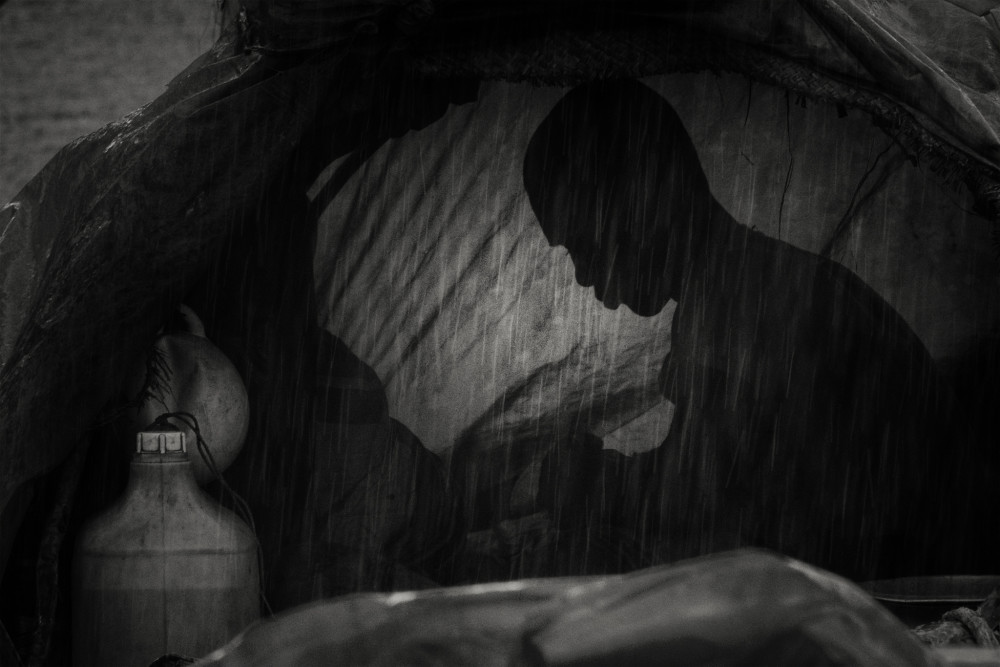
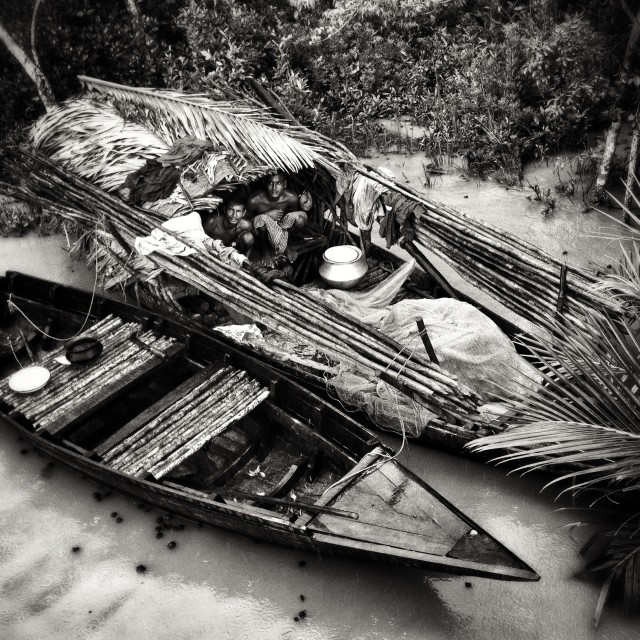

We pulled towards the riverbank. In a cove of golpata (nipa palm), half hidden from view, were two little thatched dinghies. Two fishermen were huddled in one of them. The rain fell in white veils around us as we pulled up alongside.
“The pirates came last night. They began to beat up my brother. We begged them to let him go. They did, but they took our trawler. Now we have five days to come up with 5,000 Taka.”
I’d heard that these Pirates of the Sundarbans marauded in strength, thirty to a boat, three speedboats deep; a pile of 120 Chinese-made 0.22s among the 90 of them. They hid in the https://www.insearchofsukoon.com/4qnuqkp61m0 khals by day and sped around by night, looking for vulnerable fishermen.
They took kids, men, trawlers, all to be returned for a ransom: 20,000 Taka to a lakh for a human; 5,000-10,000 Taka for a trawler. This is how it worked: at an appointed time and place you showed up with the money and the exchange was made. In a show of honor among pirates, you get a ‘Get Out Of Jail Free’ card – a pass that meant pirates won’t bother you again.
We met a boy a few days later, the son of a hilsa fisherman. He had been kidnapped and held for nine days.
Did he have a chance to escape?
“I was on a boat, where would I escape to? No, it is best to wait out these kidnappings.”
They fed him once in two days, he said. On the appointed day, he was returned to his parents for 20,000 Taka in ransom.
Rumor has it that powerful people in Dhaka fuel these gangs; that bloody fights break out between rival gangs; that the coast guard and police are in on the racket; that some highly ranked policemen even run these rackets to make up the money they had to fork out as a bribe to get posted in a city of their choice.
Rumor has it that some pirates come from India; that one gang leader, the most feared of them all, is a woman, an Indian called Ganga; that they hold their prisoners on chars (sandbar islands); that they don’t attack tourists because that turns the heat up. Fishermen are easy targets.
Reality is that kidnaps happen; that fishermen pay big ransoms for their boats, their nets, their loved ones; that this drives them deeper into debt.
The rain had ceased by now. The fishermen who had lost their trawler to the pirates finished their tea, sold us a few shrimp in exchange for a packet of biscuits, and left.
A Khal Of Memories
Every morning and evening, Caesar, Mujibur, and I climbed into the almond-shaped dugout and ventured into https://www.pathwaysmagazineonline.com/gtioz0p1fdf khals. A green-faced malkoha was in a mimic-match with a kingfisher. Another kingfisher had found shrimp for himself. A brown fish owl hunted at twilight as a toad perched on a high branch watched us warily. Mujibur’s eagle eyes missed little. He’d turn the boat around often for a cat-snake napping on a tree or a monitor lizard sashaying into a hole.
It would be nightfall by the time we got back on the GolPata, and Shoban’s dinners would be waiting. A day into the trip, the crew knew exactly what we liked and we’d find coffee at our elbow before we could ask; fresh cut fruit just when we felt like a snack. Life conversations, that I followed along only in patches and took part in only haltingly, happened between meals and forays into https://autismwish.org/j5zo8czc khals.
Caesar and I had eschewed our cabins and opted to sleep on the deck of the GolPata. Each night the Milky Way stretched above us like a band holding up the cloche of stars. Occasionally a star would break loose and streak towards us. The boat, anchored in the middle of the river, rocked and twisted and pivoted with the tides: a motion most conducive to reflection.
On the night before I left the Sundarbans, my mind was full. I thought of the time a fisherman we met had pointed to a sandbar where his friend had been attacked and killed by a crocodile. He swore he’d never allow his son to fish.
And then there was the encounter with an eel-tailed catfish: massive, three-foot long, and wild-eyed, trapped in the underbelly of a fisherman’s boat. Its fin-spines are venomous, and the man was careful, but he was happy. He would get good money for a fish of its size.
A few days later in another follow khal we’d met Saiful Khan whose brother had been painfully stung by the same creature. Khan rued these days as bad days. He’d also ominously added that someone somewhere was poisoning fish broods; that the fish were disappearing.
I thought fondly of a https://ict-pulse.com/2024/07/5s1l45n4u khal in Katka where we’d spotted a black and white tree nymph floating above our heads, a singularly exhilarating sight.
Memories of reports and rumors came flooding back to me of rampant poaching in the Sunderbans: spotted deer, boar, valuable sundri trees, tiger. We’d seen sundri trees cut and illegally carried away by fishermen.
We’d also seen rivers and seas of sundri seeds floating along to find a home and take root. In those winged round little masses making their way across the delta lay the dogged persistence of life.
One particular afternoon in Katka stayed fresh in my mind: I’d spent hours trying to find a foothold among those fingerlike spears poking out of mudflats, trying to make a good image of pneumatophores which are life’s breath for the trees when the saline tide comes in. It had me marveling at nature’s ingenuity. Each species there had a distinct pneumatophore: one striped, one speckled, one squiggly, one sharp, one snaking.
I thought of the numerous times we’d heard spotted deer call out in alarm. Did that mean a tiger was close by and alive and on the move? When I’d finally seen a deer pick its way through pneumatophores, I’d begun to understand how creatures moved through this forest.
And when a fisherman’s kid had told us of a tiger that swam for over ten minutes to cross a wide channel, it had filled me with wonder and immediate dread, for I remembered those ships again.
That night, when I had thrown a parabola of light into the dark forest, I’d seen two pairs of eyes shining back at me. Deer? I would never know. I had shut the flashlight off and floated past fireflies dancing in the trees.
A shooting star streaked a long arc to disappear behind the forests to my right. I could barely make out the dark trees and https://www.adroitprojectconsultants.com/2024/07/25/jmy0df1gdnd khals in the black moonless night. What lurked there?
The forest kept its secrets – some wondrous, some sinister; like when a fisherman’s kid had told us of a tiger that swam for over ten minutes to cross a wide channel, it had filled me with wonder and immediate dread, for I remembered those ships again.
see As the tide started to come in, I fell asleep.



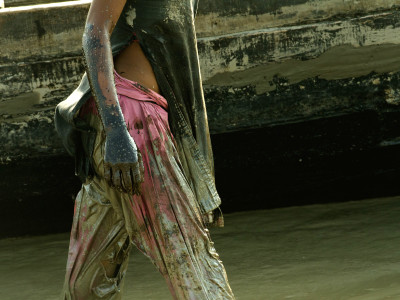
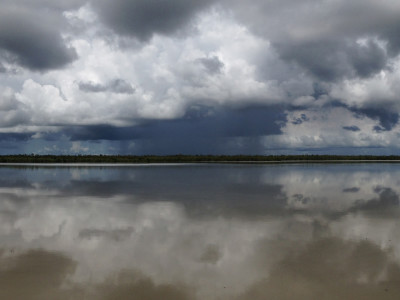
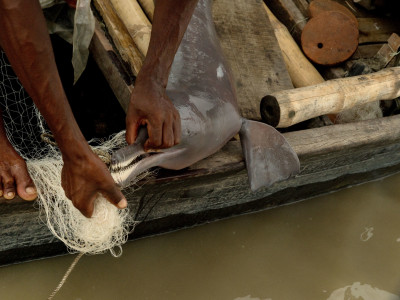
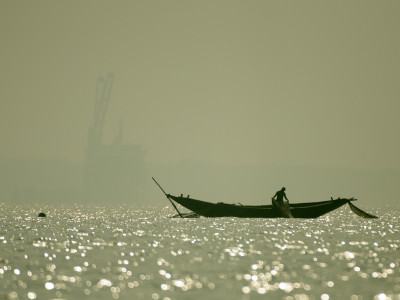

[…] on in the project, Arati decided to take a boat trip up the Sunderbans. And in the midst of what should have been a routine ride, she experienced something […]